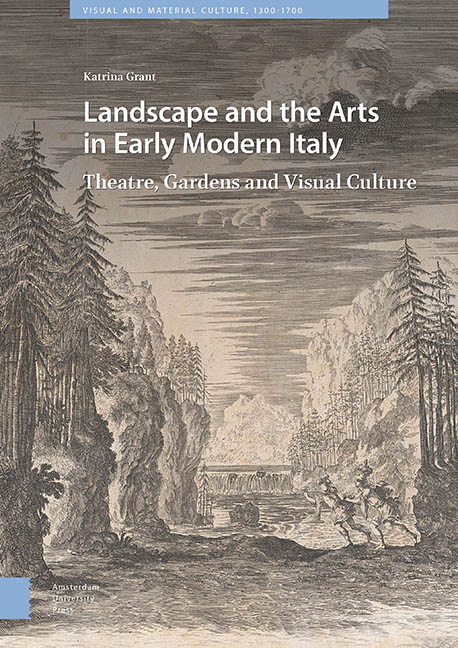Book contents
- Frontmatter
- Contents
- Acknowledgements
- Introduction
- 1 Theatricality, a View from the Landscape
- 2 Gardens of the Gods : Classical Revival, Intermedi, Early Opera and the Idea of Nature
- 3 The (Singing) Figure in the Landscape
- 4 Triumph over Nature : Machines and Meraviglia on the Seventeenthcentury Stage
- 5 The Theatre in the Landscape : Pliny to Pratolino
- 6 The Garden as Stage, the Visitor as Performer
- 7 Stages without Actors : Theatres of Sculpture, Water and Flowers
- 8 Performing in the Parrhasian Grove : Green Theatres and the Academies
- Bibliography
- Index
3 - The (Singing) Figure in the Landscape
Published online by Cambridge University Press: 15 September 2022
- Frontmatter
- Contents
- Acknowledgements
- Introduction
- 1 Theatricality, a View from the Landscape
- 2 Gardens of the Gods : Classical Revival, Intermedi, Early Opera and the Idea of Nature
- 3 The (Singing) Figure in the Landscape
- 4 Triumph over Nature : Machines and Meraviglia on the Seventeenthcentury Stage
- 5 The Theatre in the Landscape : Pliny to Pratolino
- 6 The Garden as Stage, the Visitor as Performer
- 7 Stages without Actors : Theatres of Sculpture, Water and Flowers
- 8 Performing in the Parrhasian Grove : Green Theatres and the Academies
- Bibliography
- Index
Summary
Abstract
This chapter looks at how the representation of nature on stage fits within the broader visual culture of landscape painting and drawing in early modern Italy. This, and the following chapter treat set design and special effects as conceptual inventions, capable of persuasion, which responded to current aesthetic ideas and were driven by the social and cultural contexts of their own time and place. In this chapter three case studies of artists and their milieu examine the connections between landscape on stage and in broader visual culture. The convergences and divergences between painting, drawing and the stage are examined in relation to Giulio and Alfonso Parigi's work for the Medici in Florence. The connections between landscape painting, sets and the new interest in natural philosophy and close observation of nature is examined in relation to the Barberini court in Rome. The emotional and narrative meaning of landscape in opera is examined in relation to Ludovico Burnacini's sets for the Hapsburg court in Vienna.
Keywords: Landscape painting, Set Design, Engineers, Barberini, Emotion, Giulio Parigi, Alfonso Parigi, Ludovico Burnacini
‘[P]er lo terzo intermedio, la scena divenne un bel giardino pien d’ogni sorte di delizie, alberi co’pomi d’oro, spalliere di variate verzure, muri con vasi pieni di fiori, grottesche di spugne stellanti, fonti in mezzo de prati, e simili delizie vincitrici de’sensi. In testa sotto una bellissima cerchiata di piante Verdi, comparve Calipso Regina dell’Isola Ogigia’
For the third intermedio, the scene became a beautiful garden filled with every kind of delight, trees with golden apples, a variety of espaliered plants, walls with vases full of flowers, grottoes decorated with colourful coral and sponges, fountains set in the centre of the fields, and similar delights that overwhelmed the senses. At the top of the garden, under a beautiful bower of greenery appeared Calypso, Queen of the Island of Ogygia.
Camillo Rinuccini, Descrizione della Feste fatte nelle Reali Nozze de’Serenissima Principi di Toscana D. Cosimo de’Medici, e Maria Maddalena Arciduchessa d’Austria, 1608.
- Type
- Chapter
- Information
- Landscape and the Arts in Early Modern ItalyTheatre, Gardens and Visual Culture, pp. 81 - 112Publisher: Amsterdam University PressPrint publication year: 2022

